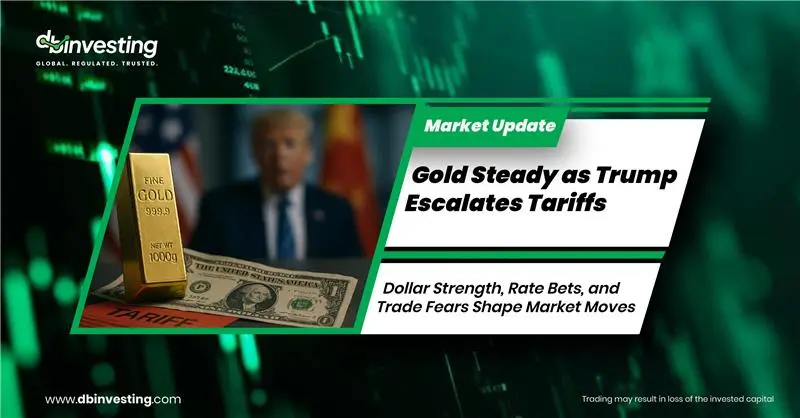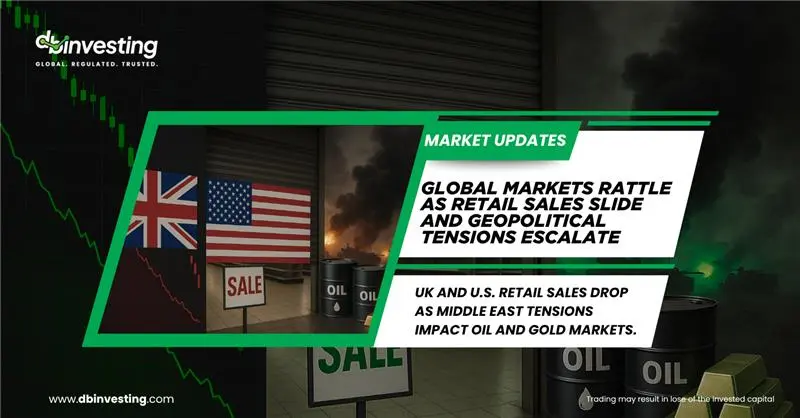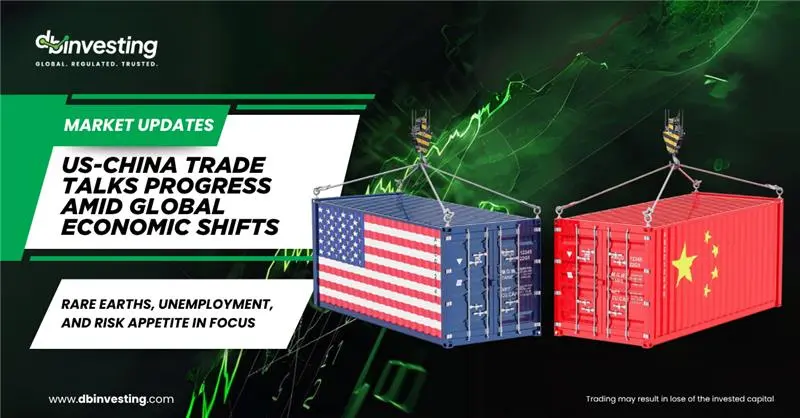Rising Dollar, Trade Tensions Shape Market Outlook
Gold Prices Hold Steady Amid Trump’s Tariff Threats
Gold prices remained stable in Asian trading on Tuesday after U.S. President Donald Trump’s tariff threats prompted some demand for safe-haven assets. However, a recovering dollar limited gains in metal markets.
The dollar strengthened following Trump’s tariff announcement, with expectations of stable U.S. interest rates in the short term supporting the greenback. The stronger dollar, in turn, weighed on metal prices.
The greenback has largely maintained its recovery from recent three-year lows, supported by strong U.S. economic data that has reduced bets on a Fed rate cut. Trump’s tariff threats also triggered demand for the dollar, as fears of inflation rise.
Trump told reporters Monday that he is not “100% firm” on the August 1 deadline and that his administration is open to further trade talks.
These remarks, along with a recent extension of the July 9 deadline, led some to believe Trump may not fully follow through with the tariff hikes, slightly boosting market risk appetite. Asian stocks rose Tuesday, reversing early Wall Street futures losses.
Trump Announces Tariff Hikes on 14 Nations
Despite that optimism, Trump later released a series of messages announcing high tariffs on many Asian and African countries. These include:
- 25% on South Korea, Japan, Malaysia, and Kazakhstan
- 30% on South Africa
- 32% on Indonesia
- 35% on Bangladesh
- 36% on Thailand
This renewed tension dented risk appetite and pushed Wall Street into sharp losses, while also supporting gold prices.
Gold Holds Near Record Highs
Gold has remained in a narrow trading range in recent weeks. The overall safe-haven demand due to Trump’s tariffs was limited, while strong U.S. data lowered the chance of imminent rate cuts. Yet, gold prices hovered close to their record high of $3,500 reached earlier this year.
Oil Prices Fall on Tariff Concerns and OPEC+ Supply
Oil prices dropped in Asian trading as markets assessed the impact of Trump’s planned tariffs on major trade partners. Additional pressure came from concerns about a global oversupply due to increased OPEC+ output.
Trump’s Monday announcement warned 14 nations of sharply higher tariffs by August 1. The list includes major U.S. energy trade partners like Japan and South Korea, along with smaller exporters such as Serbia, Thailand, and Tunisia.
Letters outlined:
- 25% tariffs on all goods from Japan and South Korea
- Up to 40% tariffs on other countries
While Trump signed an executive order to extend the deadline from July 9 to August 1, he said the date is “firm but not 100% firm,” suggesting some room for negotiation.
High tariffs on energy importers like Japan, South Korea, and India could disrupt trade flows and harm industrial output.
Australian Central Bank Holds Rates Steady Amid Global Uncertainty
The Reserve Bank of Australia (RBA) held its benchmark interest rate steady at 3.85%, surprising markets that expected a 25bps cut to 3.60%. The vote was split 6-3 in favor of maintaining rates.
The RBA cited a need for more clarity on inflation trends and raised concerns over international economic headwinds, particularly the uncertain scope of U.S. tariffs.
While Australian inflation has declined significantly since its 2022 peak, recent CPI data came in slightly stronger than expected, raising caution among policymakers.
Markets had broadly expected a rate cut — the third this year — following February’s easing cycle start. Slowing growth, cooling inflation, and global tariff risks had all pressured the RBA to loosen policy.
Still, the RBA warned of uncertain U.S. trade policy and noted that signs of slowing domestic demand and spending are appearing. However, Australia’s labor market remains tight.
Conclusion
The global markets are navigating a turbulent landscape shaped by Trump’s aggressive trade moves, a resilient U.S. dollar, and cautious central bank policies. While gold finds safe-haven support, oil faces pressure from both oversupply and geopolitical risks. Investors should prepare for further volatility ahead.


